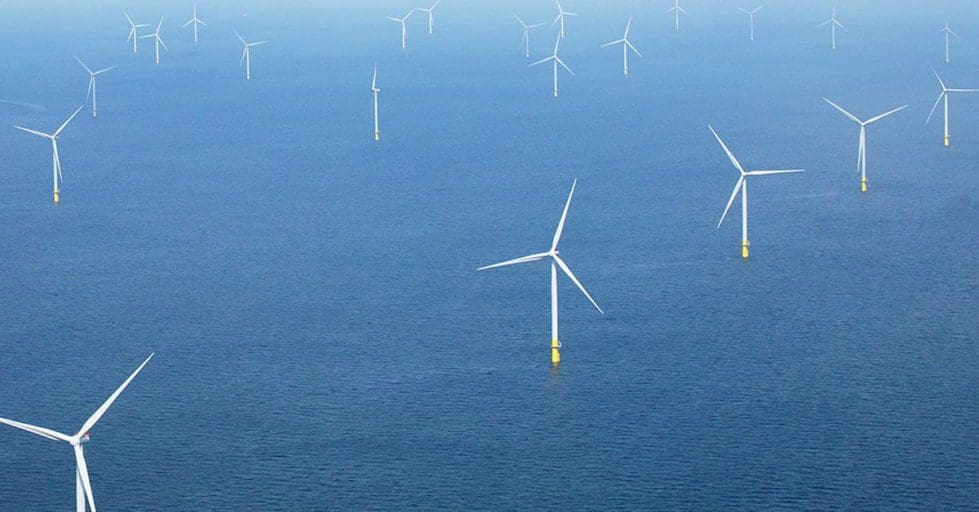The Maryland Public Service Commission has selected Danish multinational power company Ørsted’s Skipjack Wind 2 for a 20-year Offshore Renewable Energy Credit.
Skipjack Wind 2 is an 846-megawatt offshore turbine project that aims to power approximately 250,000 homes in the Delmarva region with clean energy.
Though the energy produced will mostly go to other states, Delaware alone has nearly twice the amount of homes that Skipjack Wind 2 will power.
Skipjack Wind 2 is Ørsted’s second offshore wind energy project off the Delaware and Maryland coast. It will be located adjacent to the company’s 120-megawatt Skipjack Wind 1 project.
The 853-foot-tall GE Wind Energy Haliade-X 12 MW turbines will sit approximately 19.5 miles off the coast of the Delmarva Peninsula, spanning from the waters east of the Rehoboth Beach, Delaware to the waters east of Ocean City, Maryland.
Skipjack 1 will include ten 853-foot-tall turbines in the blue area of the map. Skipjack 2 will result in an undetermined amount more in the adjacent gray area.
Ørsted will build Skipjack Wind 1 and 2 as one project, with operations expected to begin in 2026.
The company is already developing Maryland’s first offshore wind operations and maintenance facility in West Ocean City and in October established Maryland’s first offshore wind steel fabrication center at Crystal Steel Fabricators in Federalsburg.
When Trump was president, additional environmental reviews were added for existing projects, delaying development of wind farms authorized during the Obama presidency. Trump’s 2020 executive order to ban offshore oil drilling in several states also halted the issuance of new offshore wind leases.
But during Biden’s first week in office, he issued an executive order to fast track the approval process for offshore wind leases and environmental impact studies with the goal of deploying 30 gigawatts of offshore wind power by 2030.
Administration officials estimate that would create 77,000 jobs, power 10 million homes and cut 78 million metric tons in carbon emissions.
In July 2019, Ørsted entered into a non-binding memorandum of understanding with the Delaware Department of Natural Resources and Environmental Control to construct the Skipjack Wind Farm’s interconnection facility on a portion of a site within Fenwick Island State Park.
The connection site would have connected directly to the offshore project, delivering power generated by the wind farm to the grid. In exchange, Ørsted would have funded up to $18 million in improvement projects, including a parking garage, pedestrian bridge, amphitheater, new bathhouses, and a visitor center.
After the agreement was made public, citizens reacted overwhelmingly with outrage that DNREC didn’t seek public input first. In July 2020, Ørsted said it would no longer pursue its plans to develop the connection facility at Fenwick Island State Park.
It said then it would search for a new site, but a year and a half later, no site has been announced.
Delaware’s predominant offshore wind opposition group, ‘Save Our Beach View,’ is a project of the conservative think-tank Caesar Rodney Institute.
“Our precious beach is about to be changed forever if immediate action is not taken,” the group says on its website.
The group says Ørsted’s 853-foot tall wind turbines will be visible from shore during the day and at night because of the flashing of airplane and ship warning lights.
The group believes that will create an “industrial landscape” that will cause coastal tourism to suffer.
In an earlier interview with Delaware/Town Square LIVE News, Dr. Jeremy Firestone, professor and director of the Center for Research in Wind at the University of Delaware, said that on some days, depending on weather conditions, the turbines will be visible from shore.
“On other days, no,” he said. “I’ve toured a couple of wind projects and on those days I haven’t really been able to see them until I was three, four miles away.”
But Firestone argues that the health- and climate-related consequences of continued reliance on non-renewable energy sources far outweigh objections to the development of wind farms.
“Climate impacts of inaction are grave no matter where you live, certainly along the sea,” he said. “Coastal residents live in one of the areas that are particularly at risk from a changing climate.”
Firestone also warned that continued reliance on resources like coal and natural gas come with public health concerns, specifically within disenfranchised communities.
“People who are in more marginalized communities tend to be the ones that are closest to fossil fuel burning power plants and if those produce less of our energy that will be good for them,” Firestone said.
While the Maryland Public Service Commission has issued the energy credit, Ørsted has yet to make a final decision as to its level of investment. More details about the impacts of Skipjack 2 will be available after that decision is announced.


Charlie Megginson covers government and politics for Delaware LIVE News. Reach him at (302) 344-8293 or [email protected]. Follow him on Twitter @cmegginson4.
Share this Post




